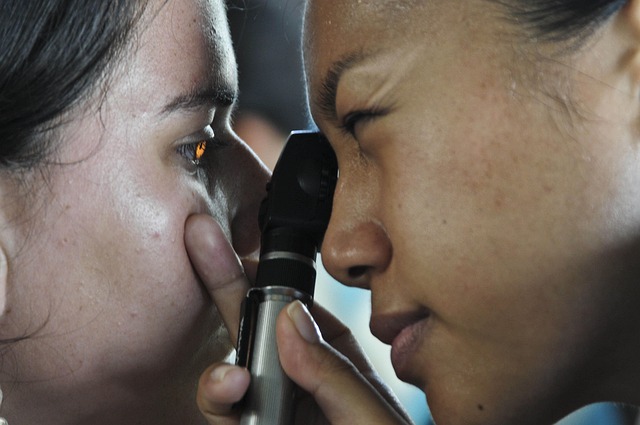Understanding Bipolar Tests for Accurate Diagnosis
Bipolar disorder can be difficult to recognize, especially in its early stages. Proper testing plays a key role in making an accurate diagnosis. Understanding how mental health professionals evaluate symptoms helps individuals and families better navigate the process. With the right approach, it’s possible to receive the support needed for effective treatment and long-term stability.

What is the purpose of bipolar tests?
Bipolar tests serve several important purposes in the diagnostic process. First and foremost, they help clinicians gather structured information about a patient’s symptoms, mood patterns, and behavioral changes over time. This systematic approach allows for a more comprehensive evaluation of the individual’s mental health status. Additionally, bipolar tests can assist in differentiating bipolar disorder from other conditions with similar symptoms, such as major depressive disorder or anxiety disorders.
Another crucial purpose of these tests is to assess the severity of symptoms and track changes in mood over time. This information is invaluable for monitoring the progression of the disorder and evaluating the effectiveness of treatment interventions. Bipolar tests also provide a standardized framework for communication between healthcare providers, ensuring consistency in the assessment and diagnosis of bipolar disorder across different clinical settings.
What are the most common types of bipolar tests?
There are several types of bipolar tests commonly used in clinical practice, each designed to capture different aspects of the disorder. One of the most widely used screening tools is the Mood Disorder Questionnaire (MDQ), which helps identify potential manic or hypomanic episodes. The Bipolar Spectrum Diagnostic Scale (BSDS) is another popular test that assesses the likelihood of bipolar spectrum disorders.
Structured clinical interviews, such as the Structured Clinical Interview for DSM-5 (SCID-5), provide a comprehensive assessment of bipolar disorder and other mental health conditions. These interviews are typically conducted by trained clinicians and cover a wide range of symptoms and experiences. Self-report questionnaires like the Bipolar Depression Rating Scale (BDRS) and the Young Mania Rating Scale (YMRS) are also commonly used to assess the severity of depressive and manic symptoms, respectively.
How does the Mood Disorder Questionnaire (MDQ) work?
The Mood Disorder Questionnaire (MDQ) is a widely used screening tool for bipolar disorder. It consists of 13 yes/no questions that focus on symptoms of mania or hypomania. These questions cover various aspects of mood and behavior, such as increased energy, decreased need for sleep, and engaging in risky activities. The MDQ also includes questions about the co-occurrence of symptoms and their impact on daily functioning.
To complete the MDQ, individuals are asked to reflect on their lifetime experiences and indicate whether they have ever experienced the described symptoms. A positive screen on the MDQ typically requires a “yes” answer to at least 7 of the 13 symptom questions, along with an indication that these symptoms occurred during the same period and caused moderate to severe problems in daily life. It’s important to note that while the MDQ can be a helpful screening tool, it is not a diagnostic instrument and should be followed up with a comprehensive clinical evaluation.
What challenges exist in diagnosing bipolar disorder?
Diagnosing bipolar disorder presents several challenges for healthcare professionals. One of the primary difficulties is the episodic nature of the condition, where individuals may experience long periods of stability between mood episodes. This can make it challenging to capture the full range of symptoms during a single clinical assessment. Additionally, patients may be more likely to seek help during depressive episodes, potentially leading to misdiagnosis as major depressive disorder if manic or hypomanic symptoms are not adequately explored.
Another significant challenge is the overlap of symptoms with other mental health conditions, such as borderline personality disorder or attention-deficit/hyperactivity disorder (ADHD). This similarity in presentation can make it difficult to distinguish bipolar disorder from these other conditions without careful evaluation. Furthermore, the stigma associated with mental health disorders may lead some individuals to underreport or minimize their symptoms, complicating the diagnostic process.
What unique insights can bipolar tests offer in the United States?
In the United States, bipolar tests can provide valuable insights into the prevalence and presentation of bipolar disorder within the population. These tests can help identify regional variations in symptom patterns or diagnostic rates, potentially highlighting areas where additional mental health resources may be needed. Furthermore, the use of standardized bipolar tests across different healthcare settings in the U.S. can contribute to more consistent diagnoses and treatment approaches nationwide.
Bipolar tests can also offer insights into the impact of cultural and societal factors on the expression and perception of bipolar symptoms in the United States. This information can be crucial for developing culturally sensitive diagnostic tools and treatment strategies. Additionally, longitudinal studies using bipolar tests can provide valuable data on the long-term course of the disorder in the U.S. population, informing public health policies and interventions aimed at improving outcomes for individuals with bipolar disorder.
In conclusion, bipolar tests play a crucial role in the accurate diagnosis and management of bipolar disorder. By providing structured assessments of mood patterns and symptoms, these tests help clinicians navigate the complexities of diagnosing this challenging condition. While challenges in diagnosis persist, ongoing research and refinement of bipolar tests continue to improve our understanding and treatment of bipolar disorder in the United States and beyond.
This article is for informational purposes only and should not be considered medical advice. Please consult a qualified healthcare professional for personalized guidance and treatment.




